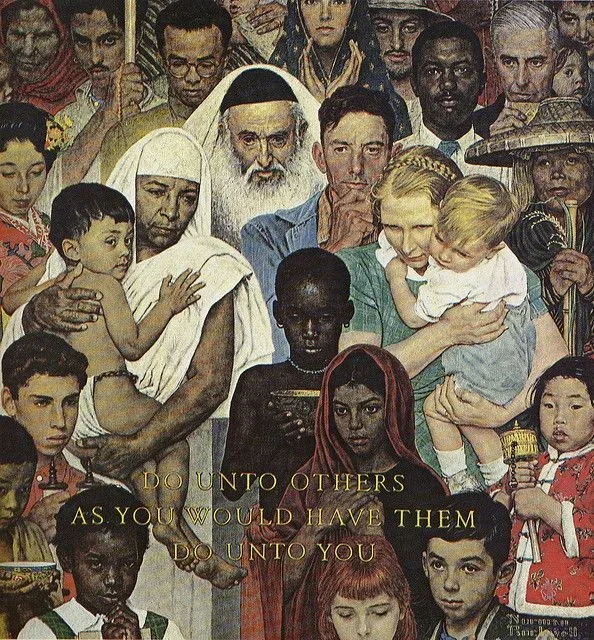Acts of courage and works of art can change the course of history
In February of 2012 I talked to college students in Manhattan about social justice, scripture, and their spiritual practices.
The Sunday before Ash Wednesday a smaller than usual group of students from Barnard College and Columbia University gathered in St. Paul's Chapel for worship. Something supernatural happened while we were there...it felt as though we were worshipping with hundreds! The feeling of communion came through story and through gesture. One student shared with us the story of her evening with Ruby Bridges.
She said that though Ruby talked about her experience as the first African-American student to integrate public schools in New Orleans, and her spiritual path to forgive those who spit and cursed at her. The story did not end in with an iconic Norman Rockwell painting. Rather Bridges said that forgiveness has been a lifelong practice. The practice, done first from an inherited habit from her Childhood church, grew to become an even more important tool in the second half of her life.
The student said that few eyes were dry as Ruby talked about a less known public pain.
Forty-five years after enduring threats of death to attend an integrated public school one of her sons was murdered.
His death came not at the hands of a white segregationist, but instead from another young black man. "Someone who looked just like him stood over him and shot him 11 times.” The student said news reports of the event were accurate, the audience was silent, "as Bridges explained that the 2005 murder of her son, her “best friend,” was the hardest thing she had ever faced, but only made her faith stronger. She refused to ask, “Why me?” or give up her faith as a result of the murder... She insisted, “the more faith is tested, the stronger it gets.”
One of the things I do a lot as a Clergyperson is to try to help people make connections. Previous to Ruby's appearance on campus I talked about the connection between Ash Wednesday and the Christian church's tradition of forgiveness. I said Ruby Bridges visit to campus to talk about forgiveness served as a great illustration of what ashes on our foreheads means.
During an interfaith Shabbat meal with Jewish students from Hillel I doubled down on the idea of making connections. I asked students to hold a silver thread.
Each person who held the thread represented a story, practice, or tradition. The thread which wound its way through the room was supposed to visually illustrate connections between people, practice, and tradition.
It would have been easy to do a similar exercise during a Chapel service. The Gospel story of Jesus' baptism, the Genesis story about Noah, God, and rainbows would have been seamless to connect. However, I said I'm not convinced this is always the best way to understand the gospel.
Sometimes we understand things better not by understanding, but by imitating.
Jesus teaches by example. If we would like to follow him we don't have to come up with a particularly unique set of spiritual practices. Do what he does until it becomes second nature. The message of God's kingdom here on earth is a series of gestures: healing the sick, eating with and feeding religious outsiders, praying with the suffering.
I invited students to create their own gestures of inclusive love. We would then imitate the movement. One student put her hand over heart, another opened her hand, An exchange student passed out hugs. A native New Englander stretched out her hands to hold and connect to others.
It was a student preparing for adult baptism however who provided a powerful gesture that illustrates for me a very difficult gospel truth. He patted his stomach and rubbed his head. I think many people find faith to be a practice that is full of opposite gestures. The connection between faith in God, religious practice, and daily life can be difficult to imitate. What do pipe organs, wooden pews, communion wafers, and ashes have to do with integrating schools, forgiveness, and being a college student?
A New York Times opinion piece by management and organizations professors explains gestures, stories, and connections differently than many religious leaders. In short, they say that bodily experience deeply affects thinking and being. Perhaps another way to say it is that religious services are an opportunity to practice gestures of faith. So too are events throughout the week. May art, courage, and our faith connect us to Grace that changes the world.
